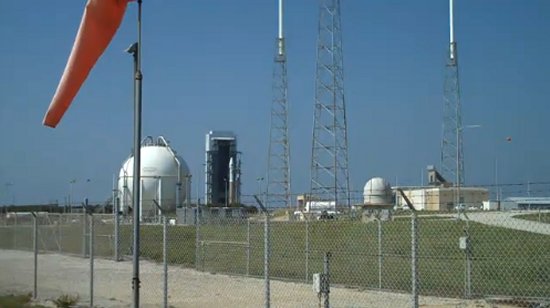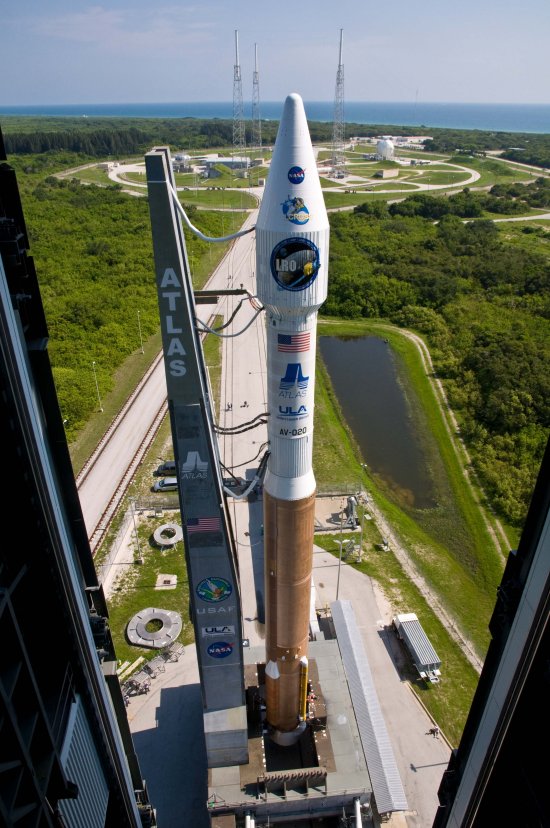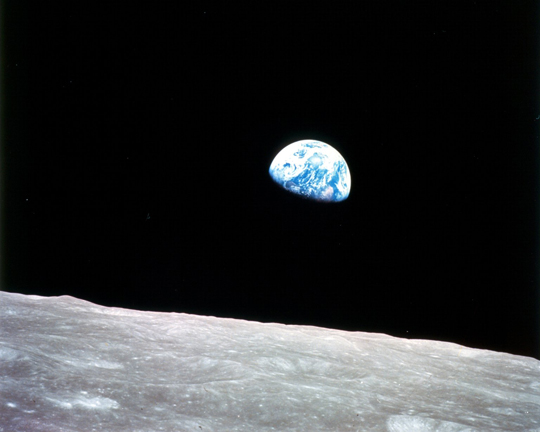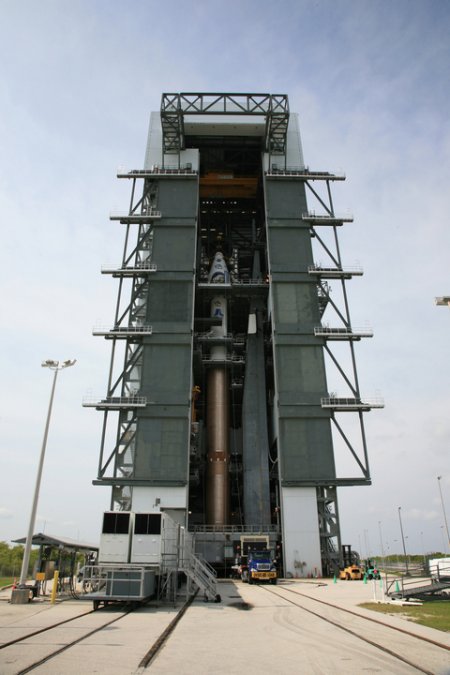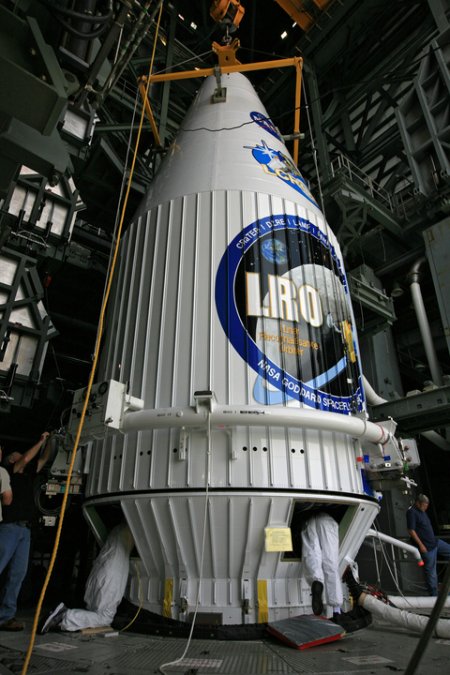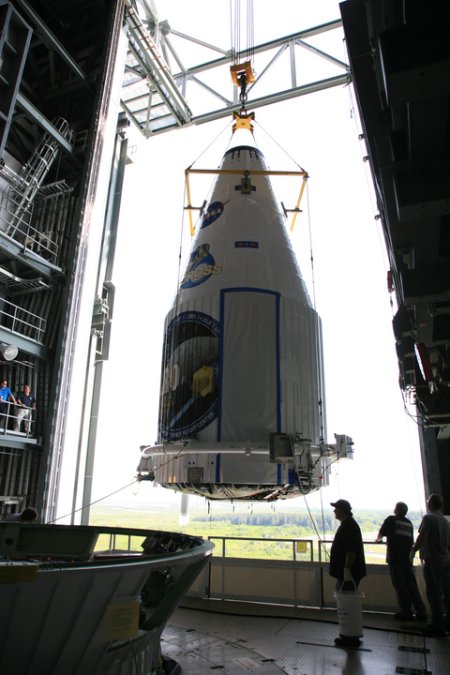Two boxy little satellites colored gold and bronze that represent NASA’s return to the moon have reached the final stop before their big day. The Lunar Reconnaissance Orbiter and the Lunar Crater Observation and Sensing Satellite are stacked and mated aboard their Atlas V rocket and now waiting in the wings for rollout to the launch pad on June 16. After one more night on Earth, the companions will blast off for the moon June 17.
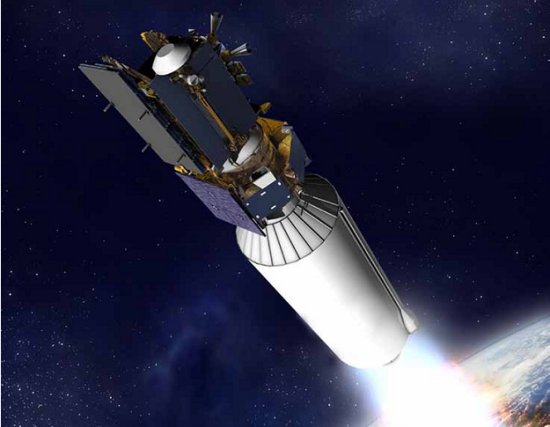
Two satellites outfitted with high-tech instrumentation, looking fairly clunky here on Earth will soon slip the bonds of Earth’s gravity and travel weightlessly to their final destinations, the moon. NASA is sending these satellites to the moon to learn more about our home planet’s nearest neighbor, which is also a geological wonderland. Did you know the moon has mountains that are many miles high, lava flows several hundred miles long and enormous lava tubes and craters of every size?
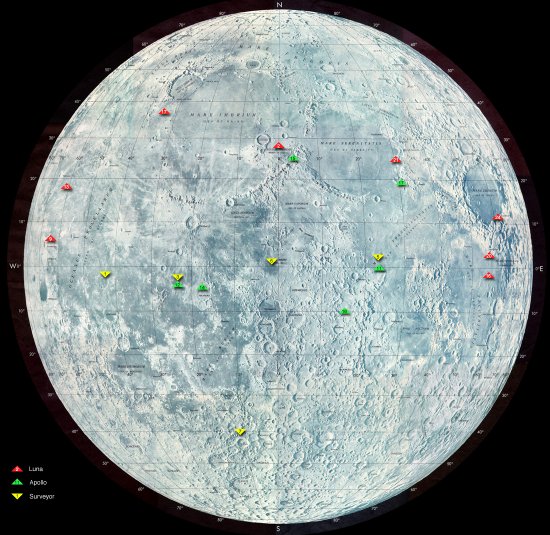
Most people don’t realize that only twelve human beings have set foot upon the moon, exploring only six locations on the lunar surface. There are spectacular vistas on the lunar surface that no human has yet seen — and equally spectacular scientific discoveries to be made. The knowledge gleaned from the fieldwork and sampling performed during the Apollo expeditions fundamentally changed our views of the solar system and the larger universe around us.
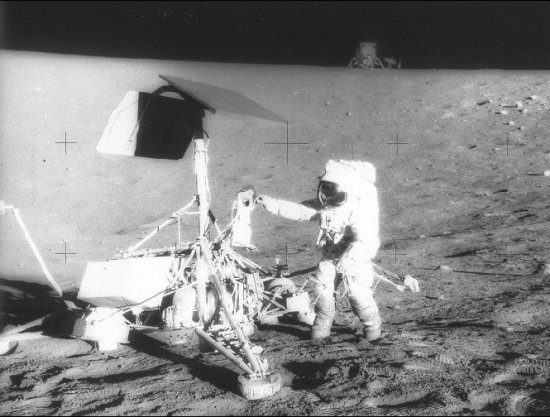
Our two missions readying for launch will provide data that will be useful for future exploration of the moon. LRO carries a full suite of instruments to tell us more about the moon than we’ve ever known before. Want to travel there someday? Even if you can’t, LRO will send the data to create high resolution 3-D topographic maps that will give us a detailed understanding of the lunar terrain and possibly help future explorers decide where to land. One instrument carries a plastic that resembles human tissue that will help us understand how the lunar radiation environment can affect living organisms. LRO is a bit nosy and will perpetually peer into permanently shadowed craters, sometimes using only the starlight as a guide. And it can tell us about the peaks where the sun never sets, too. These could be valuable for solar power if people learn how to stay on the moon long term.
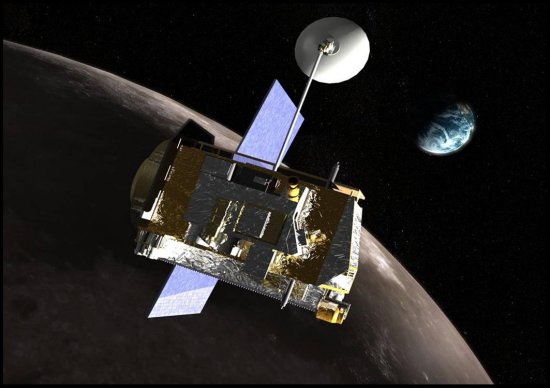
And 1.6 million passengers will go along with LRO. The microchip with all the names from around the world that were collected in the Send Your Name to the Moon campaign are securely onboard and ready to go out into the cosmos.
LCROSS is a foot soldier with a more finite and focused mission. For four months, it’s going to hold on to the spent upper stage Centaur rocket that lofted it and LRO out of Earth orbit (something that has never before been done with a Centaur). LCROSS will then separate from the Centaur and send the 42 foot, 5200 pound rocket directly into the moon to create one of the biggest man made fireworks in history. The moon won’t be harmed, but a crater 66 feet wide and 13 deep will send up a plume of material that hasn’t seen the light of day perhaps for billions of years. In the refracted sunlight, LCROSS will quickly scan for water ice and other mineralogical data before heading for an impact on the moon’s surface itself.

Across the world, amateur astronomers and scientific institutions will be focused on LCROSS’ impacts. From hundreds of miles in space, the Hubble Space Telescope will turn to witness the event. The globe will share a moment of staring at the moon.
And then as the dust settles, LRO will continue to circle, and scan and send back data, taking images of the Apollo landing sites, cataloguing craters and mountains and boulders. Until humans can once again do it in person.
